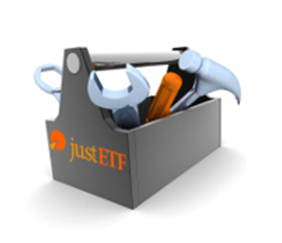May
2022
Investing Basics: What do ETFs Invest in?
DIY Investor
13 May 2022
ETFs enable you to construct a diversified portfolio cheaply and easily – writes Christian Leeming
Equities are not the only asset class for ETF investors. ETFs in particular enable you to construct a diversified portfolio of different kinds of assets more cheaply and easily than ever.
When most people hear the word investing they immediately think of shares – or equities, to give them their fancier name. But shares are just one of several asset classes that you should consider holding in your portfolio.
An asset class is a grouping of securities or investments that have similar characteristics and tend to behave the same way in a different market or economic conditions.
Because of the differing characteristics of the various asset classes, when one is struggling, another may be delivering superior returns.
Ideally, the poor returns from one asset class over some particular period of time may be more than offset by gains from a different one.
By holding different asset classes in a portfolio, an investor can therefore aim to generate an acceptable overall return, with reduced volatility on the total money they have invested. ETFs of different strategies and asset classes are ideal to build a buy and hold portfolio adapted to your needs.
There are five major asset classes to consider when building your ETF portfolio:
Cash
the most liquid asset, and the safest since it does not fluctuate with market pricing. However, returns are typically low and may be wiped out by inflation.
Bonds
Bonds are loans made by investors in return for a fixed income stream over a specific period of time, and the return of the initial sum at the end of the period. Bond prices fluctuate day-to-day and break down further into government corporate bonds with different risk/reward profiles.
Property
Commercial property, where an investor gets an income stream derived from rent, plus capital gains as buildings and land becomes more valuable. ETFs invest in collections of listed property companies, rather than directly into property.
Equities
Traded shares of stock market listed companies; can deliver income via dividends as well as capital gains as companies become more valuable. Over the long-term, equities in developed markets have delivered the best returns, but at the cost of greater volatility.
Equities can be divided by country, by sector, by size, or in many other different ways delivering different performance within an asset class.
Commodities
Commodities are bulk goods such as gold, oil, and corn. They are traded on their future prices and offered in ETFs as mixed baskets. Precious metals, as an exception, may also be bought at spot price through Exchange Traded Commodities (ETCs).
Commodities are generally used to increase diversification in a portfolio and therewith lower risk although ETFs with commodity exposure are popular with short-term traders taking a view on the markets.
Divide and conquer
These major asset classes can be broken down into further sub-categories. For example, bonds can be divided into government bonds and corporate bonds. Equities can be divided by country, by sector, by affiliation to themes, by size, or in many other different ways.
These subdivisions have their own characteristics of risk and reward and may respond differently to others in the same asset class over the economic cycle.
An ETF for every asset class
ETFs are an excellent way to get exposure to these asset classes quickly and cost-effectively.
You can find the right ETF for you using our ETF search and our investment guides and then simply buy it via your broker.

Leave a Reply
You must be logged in to post a comment.